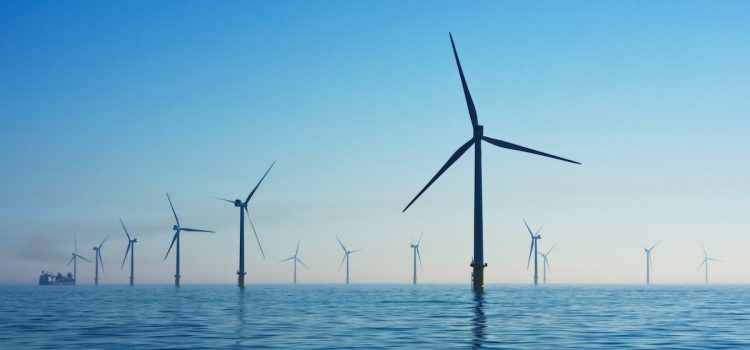

This article is an excerpt from the Shortform book guide to "False Alarm" by Bjørn Lomborg. Shortform has the world's best summaries and analyses of books you should be reading.
Like this article? Sign up for a free trial here.
How could we get the most out of solar, wind, and nuclear energy? What can we learn from trees about carbon emissions? What’s geoengineering?
In the past, we’ve often solved problems via innovation—developing new approaches rather than relying on old ones. The same is true of climate change. This is the view of Bjorn Lomborg, who argues that we should invest in innovative solutions to climate change.
Keep reading to learn about novel approaches to energy storage, nuclear energy, carbon capture technology, and geoengineering.
Innovation #1: Efficient Storage of Solar & Wind Energy
In his discussion of innovative solutions to climate change, Lomborg notes that solar and wind energy is constrained by the weather: Solar panels only generate energy when the sun shines, and wind turbines only generate energy when the wind blows. If we could efficiently store this energy, wind and solar could play a larger part in our energy usage. Presently, however, this storage is prohibitively expensive—adding storage to solar panels more than triples their cost. For this reason, Lomborg concludes that investing in developing new energy storage solutions could yield high returns.
| Pumped-Storage Hydroelectricity: An Old Solution to Energy Storage Presently, the majority of energy storage occurs via pumped-storage hydroelectricity—a process where we pump water into an uphill reservoir, and later release the water downhill, where it goes through turbines to generate electricity. Because we can use solar and wind energy to pump the water uphill, pumped hydroelectricity can “store” solar and wind energy. Indeed, one study found that it can retain 71-85% of the energy initially used to pump the water uphill. Lomborg rejects pumped hydroelectricity as a primary source of energy storage because most energy networks aren’t near two large reservoirs of water at different altitudes. However, others have proposed building artificial reservoirs of water, to make pumped storage more widely available. For example, the Eagle Mountain project in California is attempting to convert abandoned mining pits into water reservoirs, making pumped storage possible despite a lack of natural water reservoirs. So, it’s possible that expanding the old method of pumped-storage hydroelectricity could mitigate current energy storage problems. |
Innovation #2: Nuclear Energy
Second, Lomborg argues that investing in nuclear energy is promising since it emits no CO2 and poses far fewer health risks than coal, which is a dangerous pollutant. But, because there’s no uniform blueprint and each nuclear power plant is custom-built, the cost of building them is high. So, investing in uniform, streamlined designs could yield outsized returns; Lomborg even cites a 2019 study suggesting this investment could cut the costs of nuclear energy by two-thirds.
(Shortform note: Beyond providing a source of clean energy, investing in nuclear energy could also spark economic growth by creating new jobs. Indeed, while it’s currently responsible for half a million jobs in the U.S., expanding the nuclear industry would create even more new positions.)
Innovation #3: Carbon Capture Technology
Third, Lomborg suggests we should invest in technology that captures CO2 in the atmosphere and stores it elsewhere. This technology is similar to what trees do: They absorb CO2, reducing atmospheric carbon emissions. Admittedly, current technology is too expensive—Lomborg points to one 2011 study that found capturing one ton of CO2 would cost $600. For this reason, however, we should invest in researching how to drive down costs.
(Shortform note: CO2 air capture is beginning to play a larger role in climate change mitigation. For example, in 2021 the Swiss company Climeworks constructed a facility, called Orca, which is designed to remove 4,000 tons of CO2 annually via direct air capture. In 2022, they announced plans for an even larger facility, called Mammoth, which is designed to remove 36,000 tons of CO2 annually.)
Innovation #4: Geoengineering
Finally, Lomborg proposes that we should invest heavily in geoengineering, the process of artificially reducing the earth’s temperature. In particular, he recommends two forms of geoengineering. First, he recommends “stratospheric aerosol injection,” where we inject chemicals into the atmosphere that reflect sunlight. Second, he recommends “marine cloud brightening,” a process that increases salt particles above the ocean to create clouds with tinier water droplets, making them denser and whiter. Because these clouds are whiter, they reduce temperatures by reflecting more sunlight back into space.
(Shortform note: While Lomborg focuses on geoengineering techniques involving chemicals that reflect sunlight into the atmosphere, other experts consider CO2 air capture—removing CO2 out of the atmosphere—a form of geoengineering. So, although Lomborg views air capture technology as innovation, it could likewise fall under geoengineering.)
Lomborg suggests that we should fund research in both of these areas. His reasons are threefold:
- Geoengineering is cost-effective: Research for Lomborg’s think tank, the Copenhagen Consensus, suggests that creating a fleet of boats that spray salt water would cost $9 billion, and could nullify the projected temperature increase for this century.
- We need to understand the risks: Because rogue billionaires might fund geoengineering on their own, we should research it to discover and avoid unexpected harm.
- It could quickly decrease temperatures: Like volcanic eruptions, geoengineering can reduce temperature significantly in the course of weeks.
Admittedly, Lomborg recognizes that we aren’t yet ready to implement geoengineering. But, in light of these three reasons, he concludes that geoengineering deserves further research.
| Potential Harms of Geoengineering While geoengineering has gained traction among scientists, others advise that there are manifold reasons why we should treat it with caution. For example, scientists expect that some forms of geoengineering, like stratospheric aerosol injection, will further deplete the earth’s ozone level. Moreover, other forms of geoengineering could disturb oceanic ecosystems by increasing the ocean’s acidity. Because we can’t easily remove aerosol injections from the atmosphere, these consequences would be difficult to reverse if geoengineering occurs—potentially exposing us to unexpected consequences that are irreversible. However, this supports Lomborg’s proposal for researching geoengineering; we can only determine the effects of geoengineering through in-depth research. |
Exercise: Assess Innovative Approaches to Climate Change
Lomborg proposes a variety of innovative approaches to climate change: investing in energy storage, nuclear energy, air capture technology, and geoengineering. In this exercise, evaluate these strategies for mitigating climate change.
- Which of Lomborg’s innovative approaches to climate change do you find most promising? Why do you think this approach has potential?
- Which of Lomborg’s innovative approaches do you find least promising? Why are you skeptical of this approach?
- Imagine that you’re charged with devising a plan to fight climate change. How would you divide investments between innovative approaches (like geoengineering) and adaptive approaches (like building dikes)? If your split isn’t 50-50, why do you think that one approach deserves more funding than the other?

———End of Preview———
Like what you just read? Read the rest of the world's best book summary and analysis of Bjørn Lomborg's "False Alarm" at Shortform.
Here's what you'll find in our full False Alarm summary:
- Why climate change isn't as cataclysmic as people think
- The unintended costs that come with climate activists’ proposed approaches
- A look at the most promising approaches to climate change






